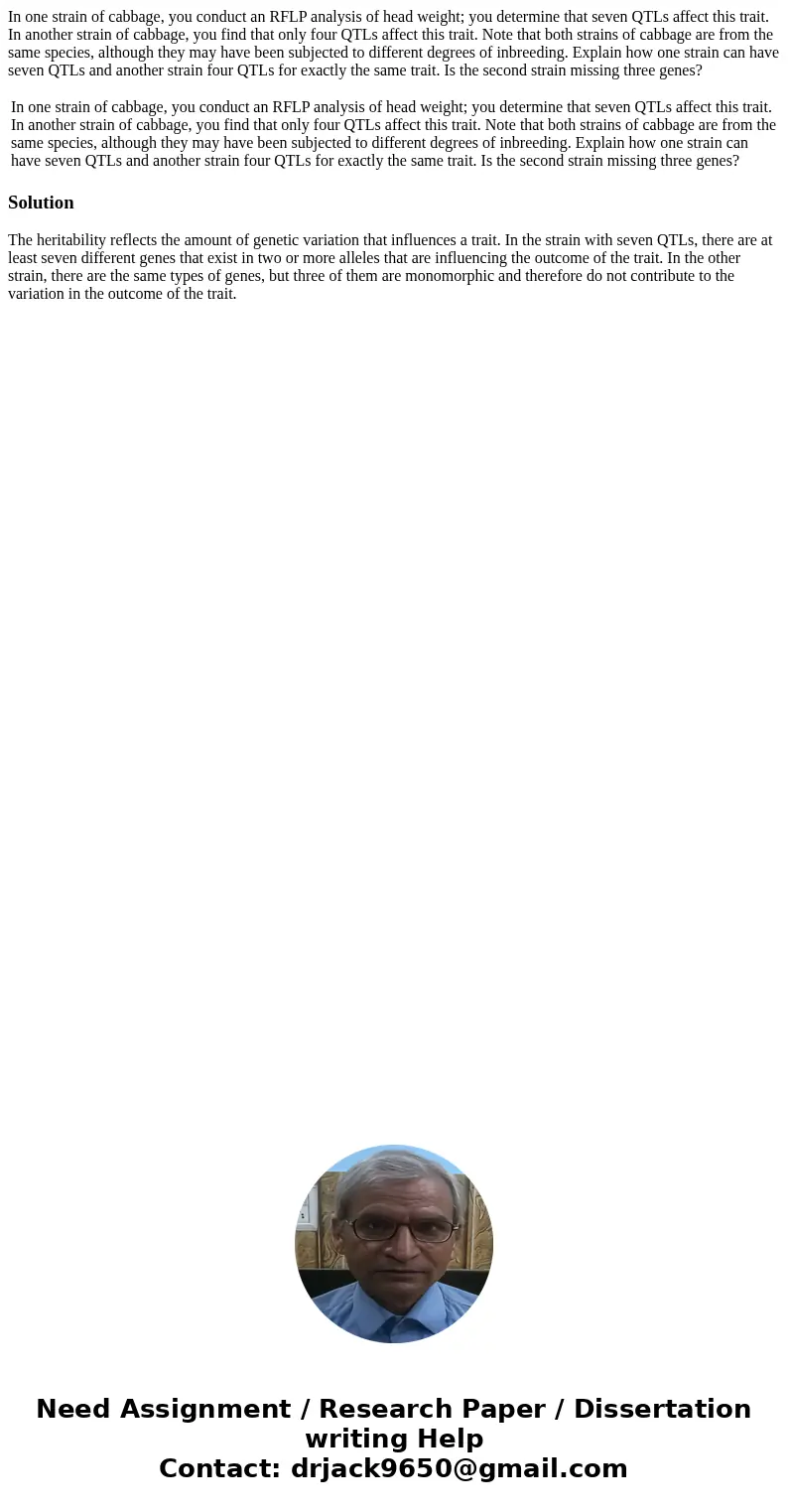In one strain of cabbage you conduct an RFLP analysis of hea
In one strain of cabbage, you conduct an RFLP analysis of head weight; you determine that seven QTLs affect this trait. In another strain of cabbage, you find that only four QTLs affect this trait. Note that both strains of cabbage are from the same species, although they may have been subjected to different degrees of inbreeding. Explain how one strain can have seven QTLs and another strain four QTLs for exactly the same trait. Is the second strain missing three genes?
| In one strain of cabbage, you conduct an RFLP analysis of head weight; you determine that seven QTLs affect this trait. In another strain of cabbage, you find that only four QTLs affect this trait. Note that both strains of cabbage are from the same species, although they may have been subjected to different degrees of inbreeding. Explain how one strain can have seven QTLs and another strain four QTLs for exactly the same trait. Is the second strain missing three genes? |
Solution
The heritability reflects the amount of genetic variation that influences a trait. In the strain with seven QTLs, there are at least seven different genes that exist in two or more alleles that are influencing the outcome of the trait. In the other strain, there are the same types of genes, but three of them are monomorphic and therefore do not contribute to the variation in the outcome of the trait.

 Homework Sourse
Homework Sourse